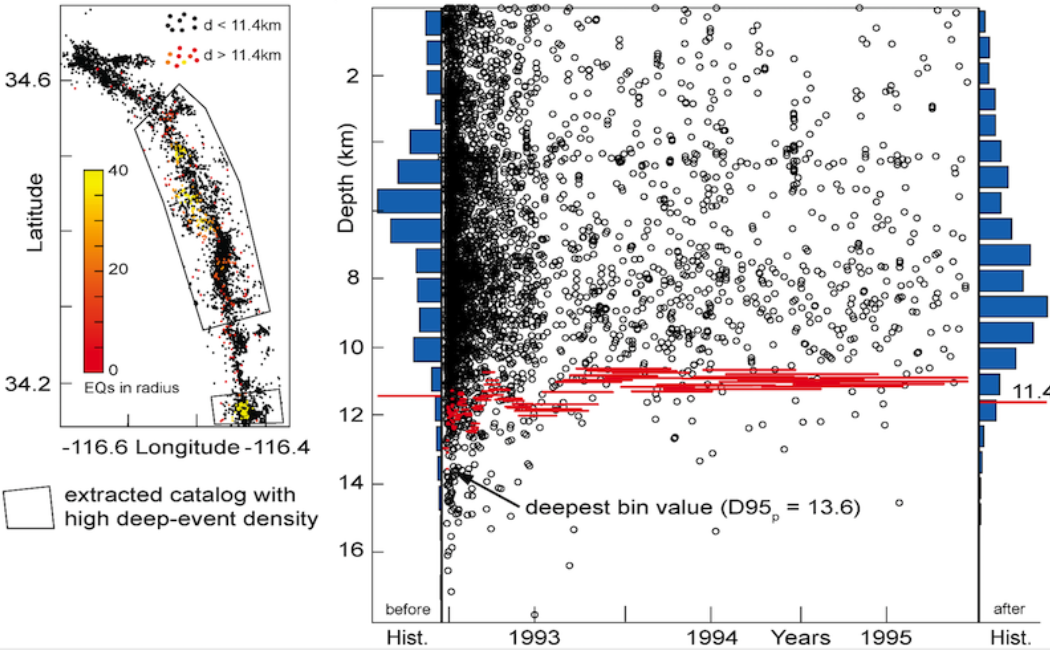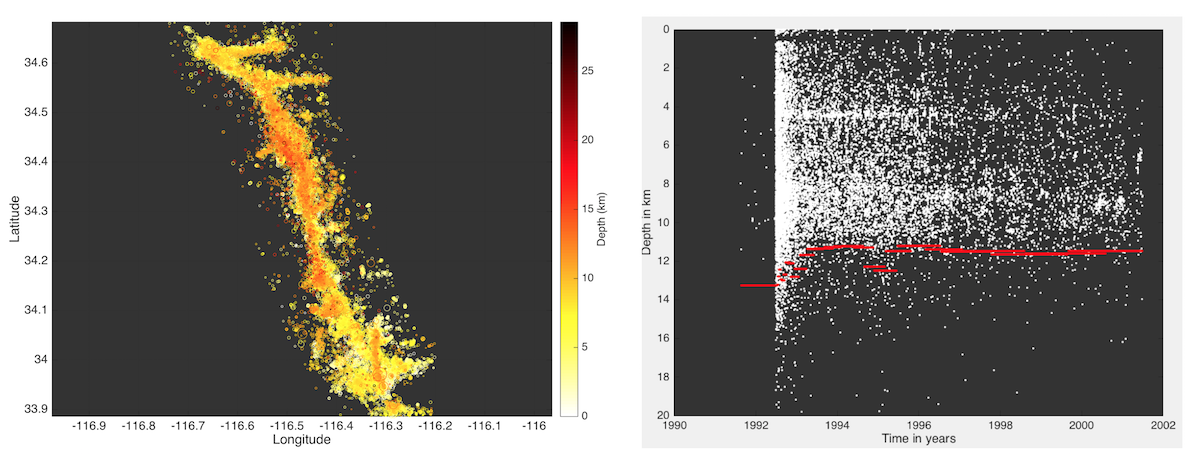


The depth of the seismic-aseismic transition zone (separating the part of the crust where earthquakes may initiate from the part where they may not) plays an important role in seismo-tectonics, affecting fault system architecture and relative fault activity, earthquake size and distribution within a fault system. Over the last two decades, a number of studies have revealed that the seismic-aseismic transition zone is not stable in time but may deepen after the occurrence of a large earthquake.In our research, we aim to identify correlations between this deepening and a number of earthquake source parameters, for example addressing the question whether this observed deepening is related to the mainshock’s magnitude. Identifying these correlations may help to better understand the rupture process as well as clarify some disputes regarding the stress drops of small and large earthquakes and whether both observe essentially the same source physics.

The figure above shows the post-seismic deepening that followed the 1992 M7.3 Landers earthquake. The left figure shows seismicity along the Landers earthquake surface rupture, color-coded by event depth. The right side figure plots the depth of seismicity as a function of time. The red line indicates the D95 percentile, indicating that 95% of seismicity within the utilized bin occurred above that depth level. Note the abrupt and transient increase in depth that is caused by the Landers earthquake in 1992. Over time, the D95 percentile reverts back to its original value.
Zielke, O., D. Schorlemmer, S. Jónsson, and P.M. Mai (2020), Magnitude-dependent transient increase of seismogenic depth, Seismol. Res. Lett. (XX), 1-10, doi: 10.1785/0220190392.